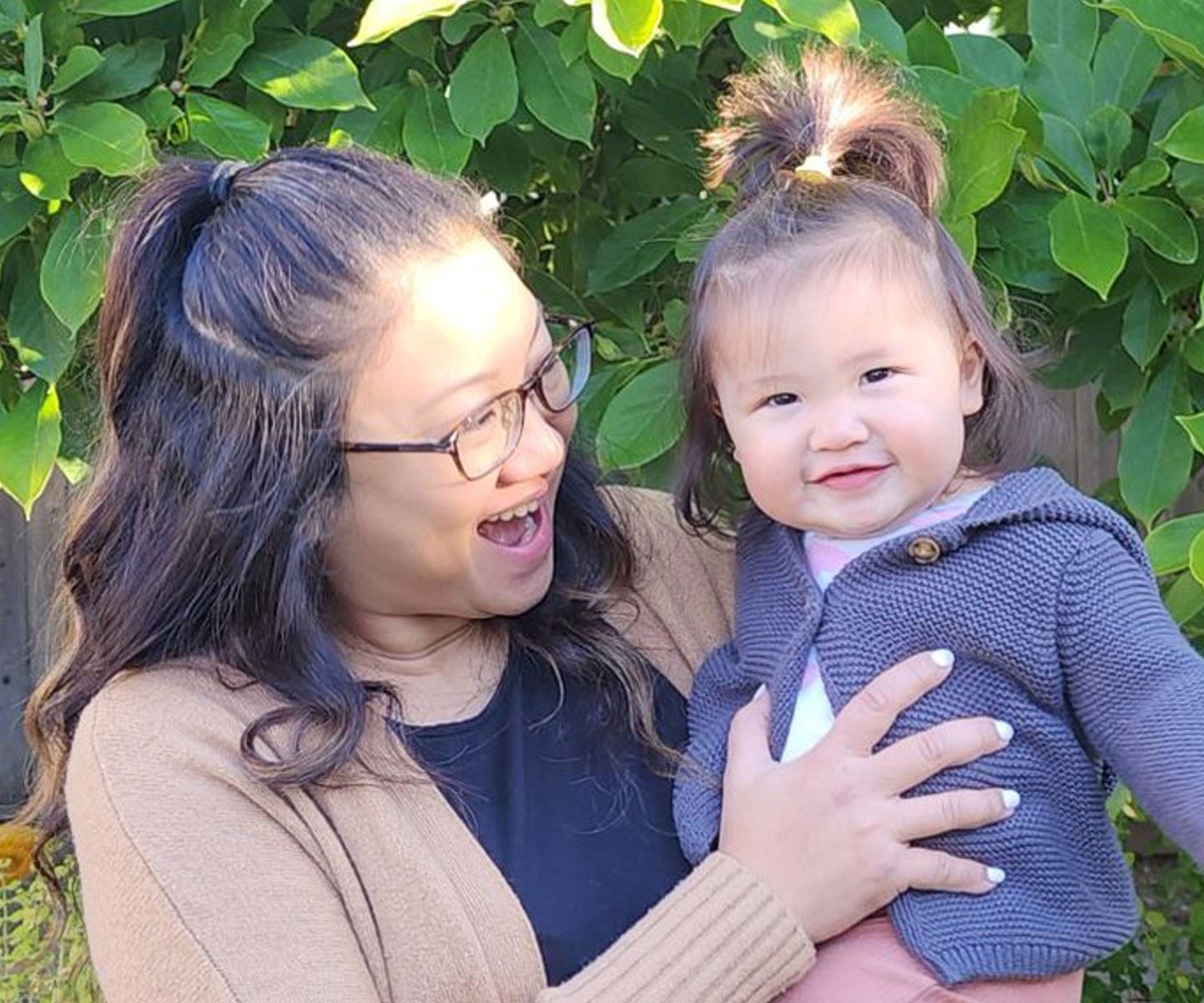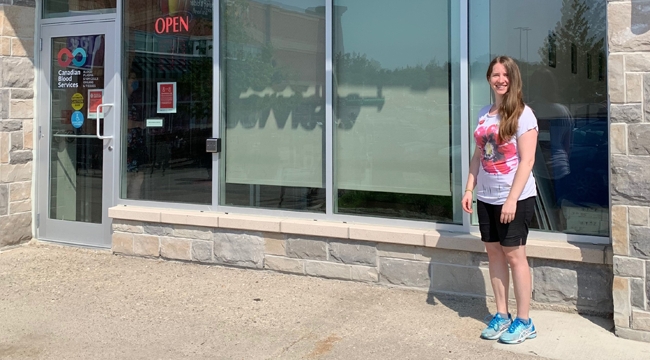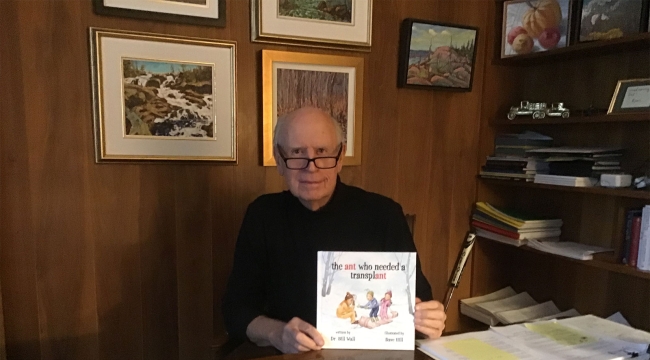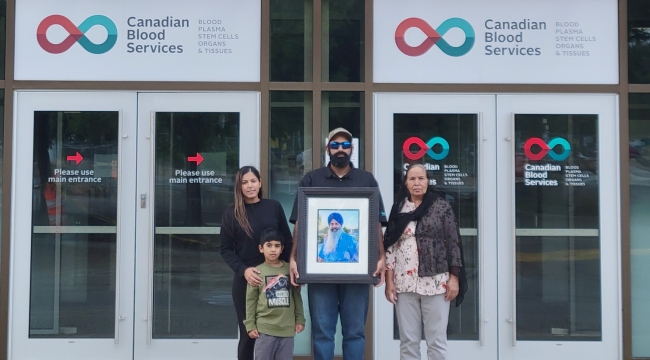Tiny cord blood donors deliver huge hope to families

Cameryn Slack’s mother Pam registered to donate Cameryn’s umbilical cord blood in the hope it could save a life
There are so many things to decide when you’re having a baby. What should you name your new addition? Should you give birth in the hospital or at home? Where will the baby sleep? But during her last pregnancy, Pam Capitulo added another one to the mix — a decision with the potential to save a life.
Pam and her husband, Graham Slack, decided to donate their newborn’s cord blood. That blood, which can be collected from the placenta and umbilical cord after a birth, is rich in stem cells. And those cells can be used to treat more than 80 diseases, including leukemia, lymphoma and aplastic anemia.
CORD BLOOD DONORS SAVE LIVES
More than 1,000 people in Canada are currently waiting for a stem cell transplant. That wait can be excruciating if a matching donor is difficult to find. Pam’s heart goes out especially to the parents of sick children who need a transplant to survive.
“I can't even imagine what they must go through,” says Pam, who delivered her daughter Cameryn at BC Women’s Hospital and Health Centre in Vancouver, B.C., in August 2021. “I look at my children every single day and think, ‘How did we get so lucky, that they are so healthy?’ because there are so many other families that go through so much hardship health-wise.
“If somebody can actually benefit from the donation that we have done, that would be amazing.”
Cord blood donors make all the difference
Cord blood is one of two sources of stem cells for transplant. The other is adult stem cell donors, including the generous volunteers who have joined Canadian Blood Services Stem Cell Registry. Adult donors typically provide stem cells through a process similar to blood donation.
Regardless of the source, certain DNA markers on the donor’s cells must match the patient’s in order for a stem cell transplant to proceed. About a quarter of patients will find a match in a sibling. But for those who don’t, their best hope lies with an unrelated donor who shares their ethnic background.
That’s why we need cord blood and stem cell donors from as many diverse ethnic and mixed-race backgrounds as possible. Currently, the majority of prospective donors on registries worldwide — including in Canada — are of European descent. Patients of Indigenous, Asian, South Asian, Hispanic, mixed-race, and diverse Black backgrounds are much more likely to struggle to find a stem cell match.
I look at my children every single day and think, ‘How did we get so lucky, that they are so healthy?’ because there are so many other families that go through so much hardship health-wise.
- Pam Capitulo, cord blood donor
As the mother of three mixed-race children, that also hit home for Pam. While she’s Asian, her husband is Caucasian.
“The fact that our kids are biracial was one of the big reasons why I believed it was important to donate — because there's just fewer options for biracial families,” she explains. “It was a no-brainer for that reason.”

A cord blood donor’s simple gift can change everything
When you donate cord blood, you never know whose life you might save — or the many ways that person will go on to support family and friends, chase their dreams or improve their community. They could graduate sixth grade with a spirit award, or pursue a passion for theatre. You won’t just make a difference, you’ll make all the difference.
Canadian Blood Services’ Cord Blood Bank first started offering expectant parents like Pam and Graham the choice to donate their babies’ cord blood in 2013. Since then, we have collected and stored some 40,000 cord blood units to be used by any patient in need of stem cells from an unrelated donor.
Our cord blood collection specialists don’t need to interact with families following the birth. They simply receive the placenta and umbilical cord from medical staff. For Pam, donating cord blood was certainly much simpler than other aspects of pregnancy and childbirth.
“I was going through surgery because I was having a C-section, so it wasn't a big deal for me,” she says. “And if one of our kids got sick and needed cord blood, it would be amazing if that was available to us.”
While Pam made her decision to donate cord blood shortly before her daughter’s birth, after being approached by one of our specialists at the hospital, it’s easy to register in advance. In addition to Vancouver’s BC Women’s Hospital and Health Centre, where Cameryn was born, we collect cord blood donations at three other hospitals in the country: Lois Hole Hospital for Women in Edmonton, Alta.; the Ottawa Hospital (General campus) in Ottawa, Ont.; and Brampton Civic Hospital in Brampton, Ont.
As we celebrate World Cord Blood Day today (Nov. 15), we encourage expectant parents living in Brampton, Ottawa, Edmonton, and Vancouver to consider donating cord blood. You can register online to donate. Every family who donates their baby’s umbilical cord blood gives hope to patients.


